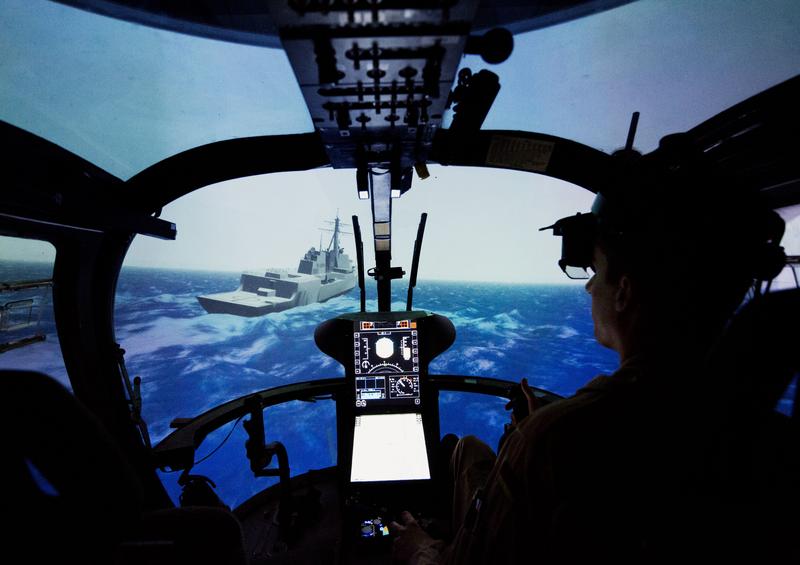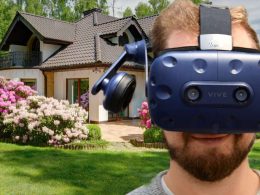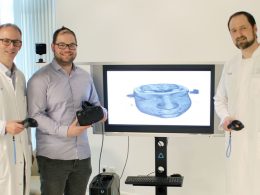Landing a helicopter on a heavily swaying ship in poor visibility is a major challenge, even for experienced pilots. Scientists at the Technical University of Munich (TUM) have developed an assistance system that displays important information directly in the visor of the pilot's helmet. The system thus enables a precise landing approach in extreme weather conditions.
It is stormy, the waves are causing the ship to sway violently, the whipping spray and the dense clouds are further obstructing visibility. The pilot heads for the small landing site on the ship. He knows that the helicopter must not come too close to the superstructure of the upper deck with its rotor blades, but must get far enough onto the deck to prevent the hull from tipping into the sea. The pilot has to abort the manoeuvre again and again.
Scientists at TUM are recreating this challenging and dangerous situation on the helicopter simulator at the Chair of Helicopter Technology. They are developing solutions to make it safer for pilots to approach and land on a ship's deck in poor weather conditions.
Augmented reality in the pilot helmet
"On the high seas, there are usually hardly any reference points to orientate yourself by," explains Tim Mehling, PhD student at the Chair of Helicopter Technology. The pilots therefore have to keep looking away from the ship in order to be able to read important information on the conventional cockpit instruments.
"What's more, after the 20th landing attempt, even the best pilot's concentration wanes," says Mehling. His idea: all relevant information about the helicopter and the ship should be displayed directly in the helmet in real time and superimposed on the outside view. This technology is also known as augmented reality.
Firstly, Mehling developed a realistic simulation of the maritime environment. At the same time, he worked with experienced naval test pilots and used national and international standards to work out what information the pilots needed for a safe approach to land.
"We have developed corresponding symbols for each flight phase during the approach to the ship. The coordinated symbols are automatically displayed in the pilot's helmet according to the flight phase."
Landing using the 3D slide
Information on the flight attitude and important helicopter parameters is displayed in the helmet. The software can also automatically detect the ship's deck using image data and then visualises the ideal approach, which is displayed in a kind of 3D slide.
"If there is no outside visibility due to bad weather, the pilot can glide down the space-stable virtual slide to land safely," explains Mehling.
Four test pilots with naval experience from the German Armed Forces and industry have already tested the system and approved it. In a further step, the pilot assistance system is to be tested by helicopter pilots from all areas. The results should help to further optimise the system.
The project is somewhat reminiscent of the recently presentedThe German Aerospace Centre (DLR) and universities have developed a concept for cost-effective remote monitoring of small airfields.
Source: Innovation Report









